Yoga for Bigger Bodies: 10 Tips to Make Your Practice Safe and Comfortable

Yoga is available for ALL body types. If you have a body, you can do yoga.
When I first began yoga seven years ago, I felt out of place and ashamed of my body because I didn’t fit the image of the super thin yogi you see all over Instagram and YouTube. I was thinner than I’d ever been, but I was still the biggest body in nearly every yoga class I attended.
Many larger bodied people never even begin a yoga practice due to the body-shaming stereotypes and stigma that come with not being thin. Many even doubt that larger bodied individuals can even do yoga, which simply isn’t true.
There is a popular misconception that you must be thin, female, and flexible to do yoga. That is unfortunate, because it isn’t accurate.
If you have a body, you can do yoga.
There are no limits on who can practice yoga. Yoga is a spiritual practice and a physical journey based on self-awareness and personal growth. Yoga has the power to improve your body image and self-worth.
Every yogi’s practice looks different just like every person’s body looks different. I have issues with both of my hips and, therefore, I have to make modifications in many yoga poses to ensure that my body is safe from injury.
Other yogis have shoulder or knee problems and have to modify accordingly. Don’t allow your weight, body shape, level of flexibility, or level of experience keep you away from what could easily be a fulfilling practice for you.
Yoga for Bigger Bodies – Here Are 10 Tips to Practice Safely and Comfortably:
The 10 plus size yoga tips below can help you customize your yoga practice to suit your needs.
1. Be open to modifying poses
Since every person’s body is different, it is often necessary to modify a pose so that you are not only in the proper alignment, but also safe from injury.
However, it is common for our egos to get in the way of making that modification, especially in a room full of people. Our minds take over and pressure us into doing the most “advanced” version of a pose.
Listen to your body and respect its limitations. Yoga should be challenging, but it should never be painful or injurious.
In Child’s Pose, for example, spread your knees a bit wider apart and try resting your forehead on your forearms, a bolster, or a yoga block. In a pose like Happy Baby, instead of grabbing onto the outside edges of the feet, you can grab onto the thighs.
For someone with large breasts, Eagle Pose can be inaccessible. Instead, you can give yourself a hug by bringing each hand to the opposite shoulder.
Know that you are not a lesser practitioner for taking modifications in yoga poses. Rather, you are a more advanced practitioner when you are able to listen to your body and give it what it needs. Many people are unable to do that!
2. Use yoga props
Yoga props are useful for everyone regardless of size, age or level.
Props are wonderful tools that help to extend your limbs and bring the floor closer to you. They help you to build strength and flexibility and avoid injury. The great news is that there are yoga props for almost every need.
Try These 10 Yoga Props to Enhance Your Yoga Practice
In a lunge, forward fold, or standing pose, yoga blocks bring the “floor” closer to you. You can also sit on a block to help make seated poses not only more comfortable, but beneficial. The height allows for you to bend forward without rounding the spine more easily.
A yoga strap is useful for stretching or aiding in grabbing opposite arms behind your back. Chairs are great for seated poses when it isn’t comfortable to get down onto the floor. A wall is a fantastic prop to help you maintain your balance.
Yoga mats can be a prop too! You can roll them up to help cushion your knees in poses like Table Top or your wrists in poses like Down Dog. Be creative and don’t hesitate to ask for help.
3. Widen your stance
Most standing yoga poses call for you to place your feet roughly hip’s width apart. But when you’re practicing yoga for bigger bodies, it may actually be beneficial to take a wider stance.
It could increase your stability and balance. In a forward fold, a wider stance can provide more space for the belly so that folding forward is not only more comfortable, but more beneficial. Experiment with your feet at hip’s width distance and a little wider to see which is more comfortable and stable for you.
4. Take it slow
Always go at your own pace – there is no reason to rush.
Yoga isn’t just about the finished pose, it’s about the transitions between poses also. Moving slowly not only calms the body and mind, but also encourages you to listen to your body.
5. Build strength to prevent injury
Yoga poses are generally harder than they look. Being mindful of your weight simply means that you understand that certain poses may increase your risk of injury, require more strength, or require more attention to detail.
Arm balances are a good example of when you need to be extra mindful of your body weight to reduce the risk of injury.
In most cases, arm balances require more strength than flexibility. Plus, the wrists are quite delicate. Therefore, be sure to build up strength in your arms and core to allow you to safely practice arm balances and similar postures.
Have wrist pain or sore wrists after doing yoga? Try These Wrist Stretches and Modifications to Prevent Pain and Injury (Video Tutorial)
6. Recognize that there is no perfect yoga pose
Despite what you see on Instagram, there truly is no “perfect” yoga pose. There is only the perfect form of the pose for your body.
Don’t allow what others look like in a yoga pose to influence your actions. You’re likely doing yoga as an act of self-care, so why would you allow what someone else looks like in their yoga pose to make you feel like anything less than the perfect being that you are?
Create a Realistic Self-Care Routine With These 17 Simple Practices
Focus on your body and your breath and let everything else go.
7. Stretch frequently
Like I mentioned earlier, you don’t need to be flexible to do yoga. Rather, a regular yoga practice encourages flexibility over time.
However, it might be beneficial to include some routine stretching outside of your yoga practice to reduce the risk of injury or strain. Pick around five yoga poses that make you feel exceptionally good and practice them often.
8. Expect some soreness
You will likely experience some soreness, especially if you are new to yoga.
Soreness is good! It means that what you’re doing is working and building strength. After your yoga practice, consider taking a nice hot bath with Epsom salts. This may reduce some of your soreness.
It’s also a good idea to take one or two days off per week to allow your body to restore and to reduce inflammation in your body.
9. Seek out a teacher you connect with
There are millions of yoga teachers out there. Thus, there is definitely at least one or two that you will connect with and feel safe around.
Don’t give up after trying one class with one teacher. Try different classes, teachers, and reputable online platforms (like YA Classes!).
Look for a teacher that is knowledgeable, cultivates a body-positive atmosphere, and offers a lot of modifications. You don’t have to specifically seek out plus size yoga classes or yoga for bigger bodies; but it is important to seek out a great teacher that you connect with.
10. Don’t give up
Yoga is challenging and the practice will undoubtedly bring up difficult emotions. Know that it is normal and healthy if and when these emotions arise.
You may even experience negative self-talk. Don’t be critical of your thoughts and feelings. Just notice and do your best to let it all go.
Above all, don’t give up. Yoga is a beautiful and beneficial practice. Stick with it. You CAN do it. I am certain of it.
Yoga for Bigger Bodies: The Takeaway
Remember, there is no “one-size-fits-all” yoga pose or yoga class. Each and every one of us has a different body with different needs and that is perfectly okay!
Don’t let anything get in your way of doing something that is good for you. Celebrate your body as it is and let your yoga practice help you to do just that!
Jessamyn Stanley Talks Body Positivity, Social Media and Yoga (Interview Video)


This Month's Letter
From the Editor
Monthly motivation and food for
thought from our founder.


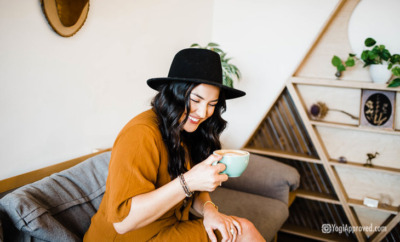
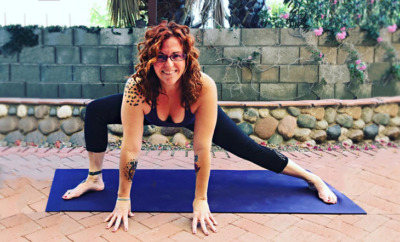



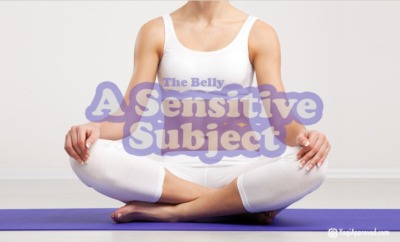





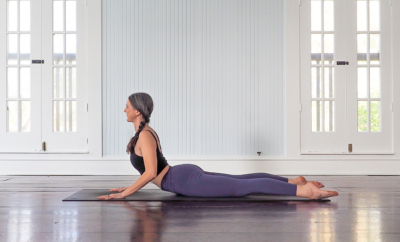



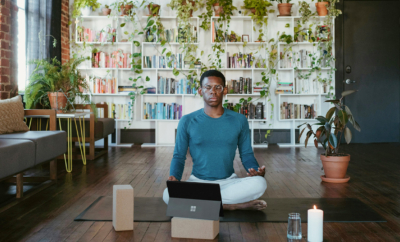
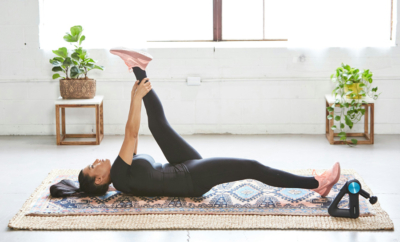











Comments